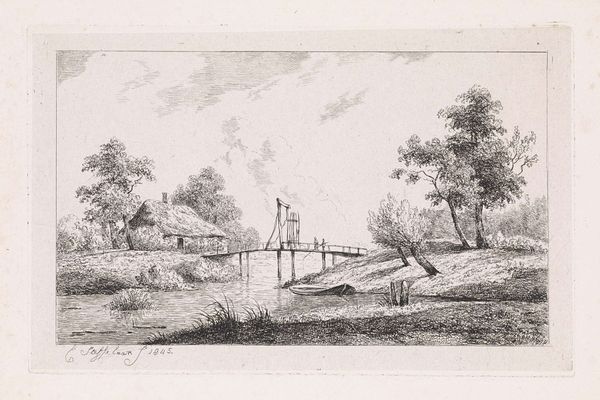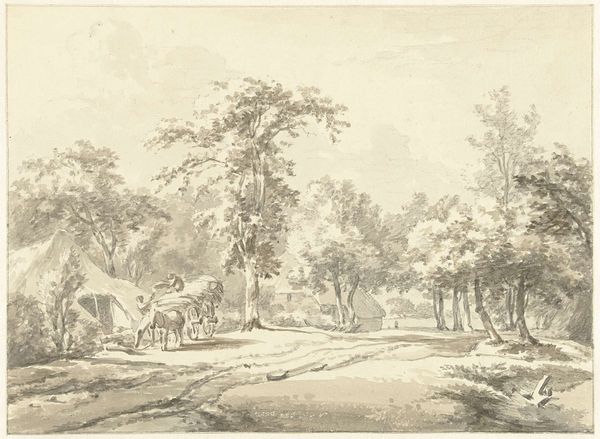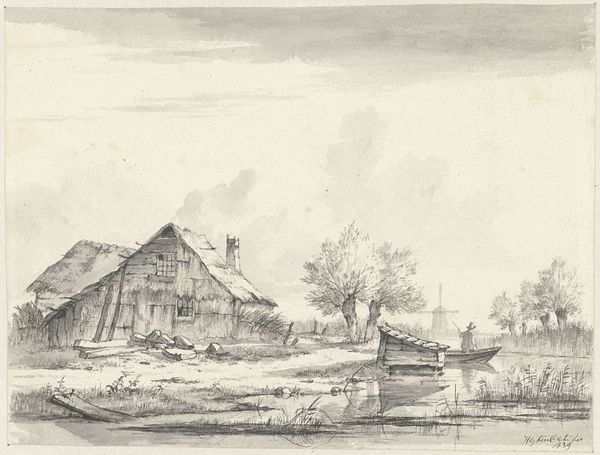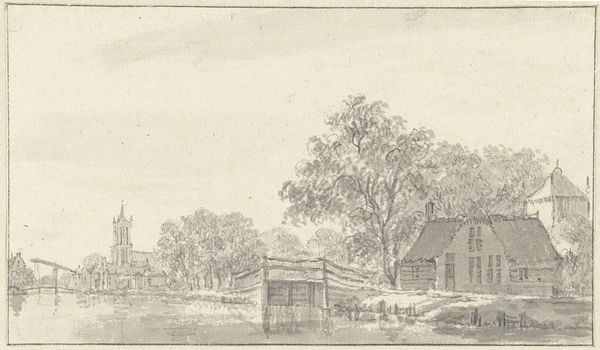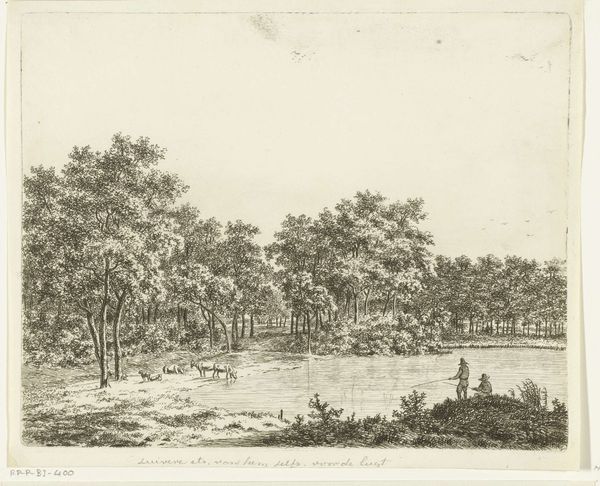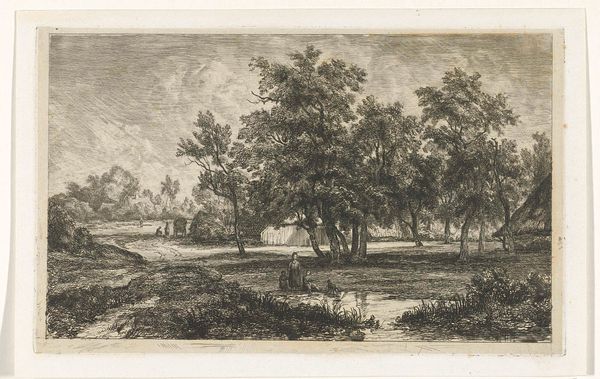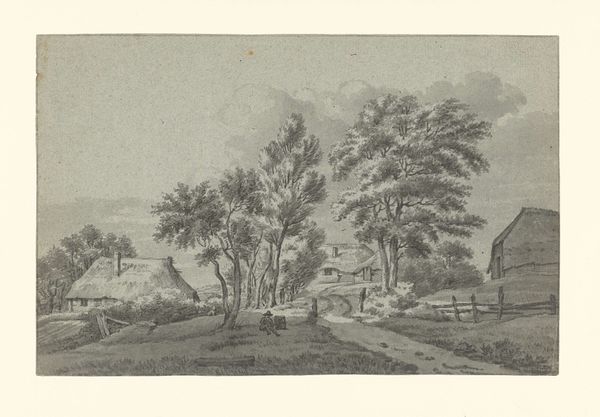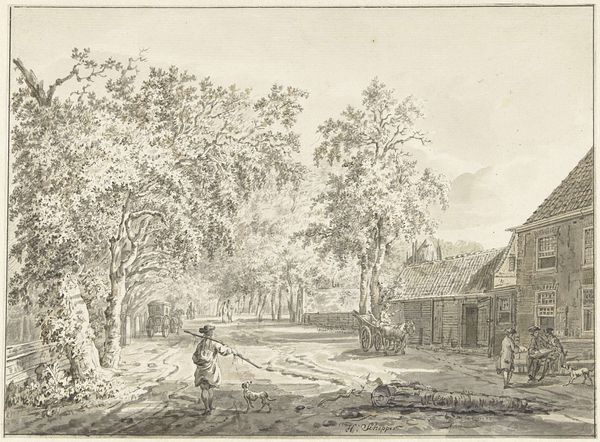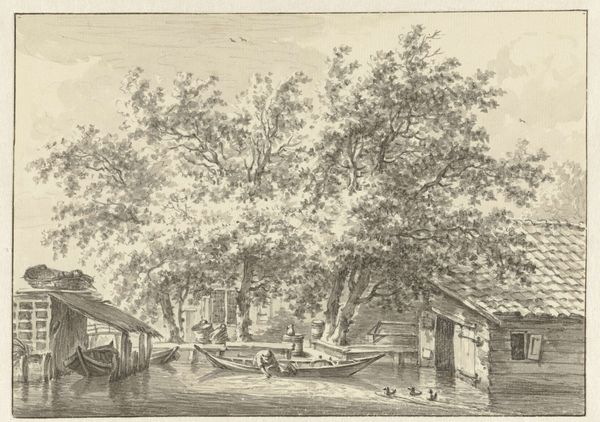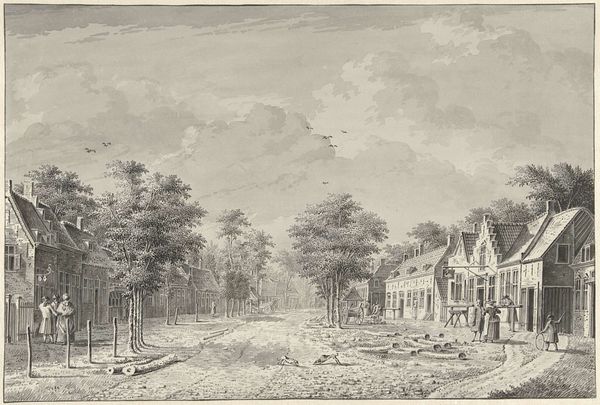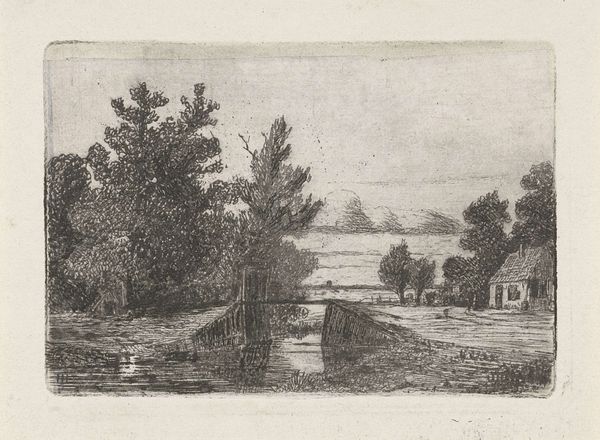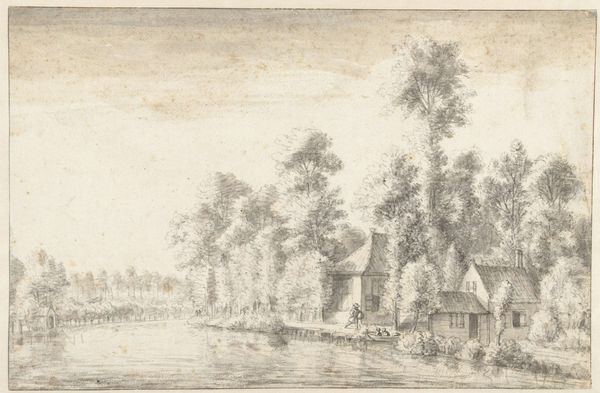
drawing, graphite
#
drawing
#
pencil sketch
#
landscape
#
romanticism
#
graphite
#
realism
Dimensions: height 210 mm, width 306 mm
Copyright: Rijks Museum: Open Domain
Curator: Gerrit Lamberts created "Gezicht bij Oudewater" in 1834. This pencil and graphite drawing captures a tranquil view near Oudewater and is currently held at the Rijksmuseum. Editor: My initial reaction is one of quiet contemplation. The limited tonal range of the graphite lends it a subdued, almost dreamlike quality. It evokes a profound stillness. Curator: Indeed, the composition is structured around the receding planes of space, isn't it? The artist uses linear perspective, anchored by the group of trees that pull us in to a small, unassuming farm house, leading the eye into the distance with delicate precision. It highlights an attention to structured harmony and spatial logic. Editor: But what I find equally compelling is the way the labor of the landscape is made visible. The humble nature of the farmhouse set against those ordered trees. Consider also how the drawing reveals Lamberts’ process, a direct, unmediated interaction with his subject—you see every pencil stroke! He's laying bare the act of representation itself, highlighting the manual construction of this rural scene. Curator: A fascinating point. You're urging us to think about its creation in relation to the socioeconomic factors impacting farmers at the time. The bare strokes emphasize the relationship between rural life and a burgeoning Industrial Age. Editor: Precisely. This wasn't merely about depicting beauty. By revealing the artistic process and depicting a simple farmstead, he's engaging with themes of rural existence and even perhaps an impending social shift towards urban areas. It encourages us to look past the purely representational. Curator: It also speaks to a romanticized realism of its era. How interesting it is that it presents this very constructed simplicity through rather sophisticated pictorial devices. A calculated perspective leading to such modesty. It almost creates an idyllic tension. Editor: Right. That intersection between idealized representation and the realities of manual labor is central to how I interpret its cultural value and making of art. The act of selecting and presenting this particular perspective transforms the pencil sketch from mere observation to social commentary. Curator: I’ll consider the tension you bring to the foreground when viewing "Gezicht bij Oudewater", and perhaps also linger more consciously over its tranquil but deeply deliberate spatial dynamics. Editor: Indeed. Hopefully visitors will now regard the drawing with a deeper awareness of both its form and its historical roots.
Comments
No comments
Be the first to comment and join the conversation on the ultimate creative platform.
